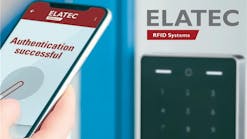When installing an access control system, there are countless decisions to be made. However, one of the first should be whether the system will be hardwired or wireless. Both methods have drawbacks and advantages, so it’s important to understand when the choice to go wireless makes sense.
When there is access to power, clients may not want to deal with maintaining the battery systems required for some wireless applications ‑ specifically in new construction when the cost to install a hardwired system is minimized. Some life safety applications may require hardwiring to ensure the access control hardware is integrated as necessary, so be sure to consult the local AHJ prior to installation.
For most clients, however, and particularly from a retrofit perspective, wireless can offer a simple and very cost-effective solution. Whenever the architecture of the opening or access point is prohibitive to the traditional hardwired application, particularly in historic buildings where you don’t want to compromise the integrity of the structure, wireless technology provides a great alternative.
Recent advances in technology have eliminated many of the tradeoffs that wireless customers had to accept in the past. Latency was once the biggest challenge to wireless systems, preventing customers from managing their systems effectively and causing headaches for installers and integrators. But today’s wireless systems offer users the same experience as a hardwired system, including bi-directional communication and access to real time audit information. Customers no longer have to deal with extended delays and latency. Wireless now communicates in less than 5-10 seconds ‑ practically real time. New systems also have much lower power requirements that result in greater battery efficiencies, giving customers increased flexibility when managing their systems.
When choosing a wireless system, consider the nature of the building environment and application of each respective access point being targeted. Most buildings have a dynamic environment and, depending on the nature of activities within the building the customer may need to consider more than one type of wireless solution.
If a customer needs to be able to communicate remotely to an access point in real-time, he or she should consider the use of 900MHz or Bluetooth Low Energy (BLE). Both enable frequent bi-directional communication; however they generally require a wireless gateway of some type.
Alternatively, if the targeted application does not require real-time communication of access changes and audits, a wireless offline solution such as Wi-Fi may be appropriate. Access decisions are made at the door rather than at a host or access control panel. The door file gets into the lock through a WiFi or wireless connection, but the lock is effectively offline. The door maintains all the information and updates the host and access control software on a periodic basis, perhaps once or twice a day.
There are multiple options within the wireless market to help address what the customer is looking to do. A lower level of connectivity may be sufficient for some customers’ needs, while others might need to have real time engagement with the access point. Understanding how your client is planning to utilize the respective openings in a building is the best guide in the selection of wireless solutions to deliver the targeted customer experience.
Brad Aikin is the Business Leader for Commercial Electronic Locks for Allegion. For more information, visit us.allegion.com.





